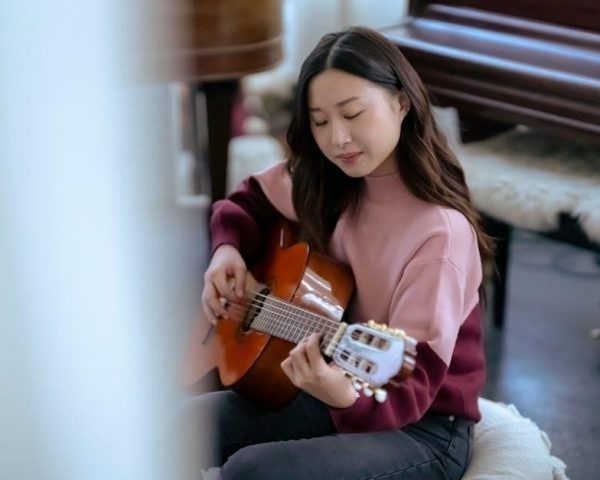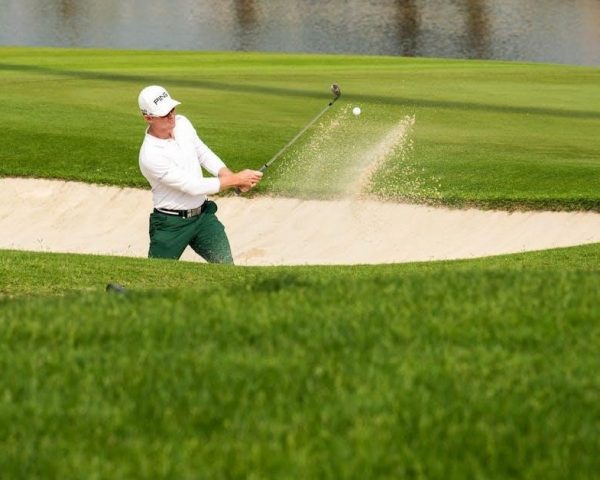“See You Again” by Wiz Khalifa, featured in the Furious 7 soundtrack, is a heartfelt tribute that resonates globally. Its emotional melody and chord progressions make it a popular choice for piano covers, offering both challenge and fulfillment for pianists of various skill levels.
Overview of the Song’s Popularity
“See You Again” by Wiz Khalifa, from the Furious 7 soundtrack, became a global phenomenon, topping charts in over 20 countries, including the US, UK, and Australia. Its emotional depth and memorable melody made it a favorite, staying 12 weeks at number one on the Billboard Hot 100. The song’s success was further amplified by its association with the film, making it a timeless tribute and a popular choice for piano covers worldwide.
Importance of Sheet Music in Learning the Piece
Sheet music is essential for mastering “See You Again” as it provides precise musical notation, guiding pianists through melody, harmony, and rhythm. It helps in understanding the song’s structure, including verses, choruses, and transitions, and ensures accurate tempo and dynamics. Sheet music also aids in practicing specific sections and learning chord progressions, making it a vital tool for both solo and accompanied performances. Additionally, it enhances sight-reading skills and theoretical understanding, making it indispensable for pianists of all levels.
Where to Find “See You Again” Piano Sheet Music in PDF
Find “See You Again” piano sheet music on platforms like Musicnotes, Sheet Music Plus, and MuseScore, offering both free and paid versions for download.
Free Sheet Music Websites
Several websites offer free access to “See You Again” piano sheet music in PDF format. Platforms like Mutopia Project and IMSLP provide free sheet music, though selections may vary. Additionally, forums and communities, such as Reddit’s r/SheetMusic, often share user-contributed arrangements. While free options are convenient, they may lack the quality or completeness of paid versions. Always verify the source for accuracy and legality.
Paid Sheet Music Platforms
Premium websites like Musicnotes and Sheet Music Plus offer high-quality “See You Again” piano sheet music in PDF format. These platforms provide accurate notation, often officially licensed, ensuring authenticity. They cater to various skill levels, offering arrangements from simple to advanced. Purchasing from these sites supports creators and guarantees legal, professional-quality sheet music, making them ideal for serious pianists seeking precise and reliable materials for practice and performance.
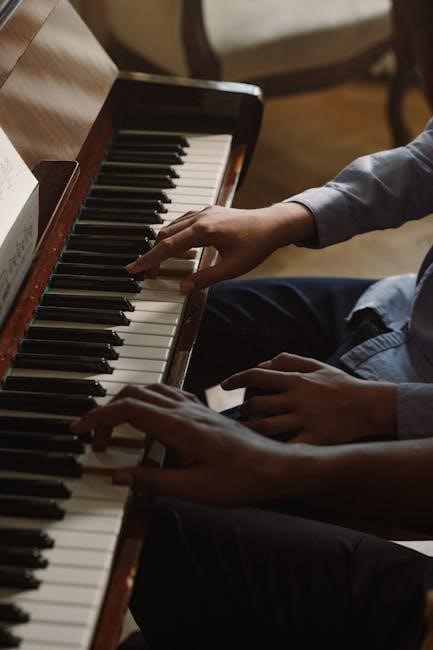
Downloading and Printing the Sheet Music
Download the PDF file from a reliable source, ensuring it’s complete. Use a printer with high-quality settings for clear notation. Check paper size and margins for proper formatting. Ensure legal compliance and copyright adherence before printing. Verify the file includes all pages and musical markings for an accurate representation of the piece.
Steps to Download the PDF
Visit a trusted sheet music website and search for “See You Again” piano sheet music. Select the desired arrangement and verify its compatibility with your skill level. Review the preview to ensure accuracy. Click the download button and choose the PDF format. If prompted, create an account or log in to access the file. Once downloaded, save it to a dedicated folder for easy access. Ensure your device has a PDF viewer installed to open the file without issues.
Printing Tips for Optimal Quality
For the best results, use high-quality paper with a brightness rating of 96 or higher. Set your printer to high-resolution DPI (300 or above) to ensure clear notes. Choose portrait orientation for standard sheet music or legal size if needed. Adjust margins to fit the page without cropping. Use a laser printer for crisp text and avoid inkjet smudging; Bind the sheets with a sturdy cover for durability during practice.
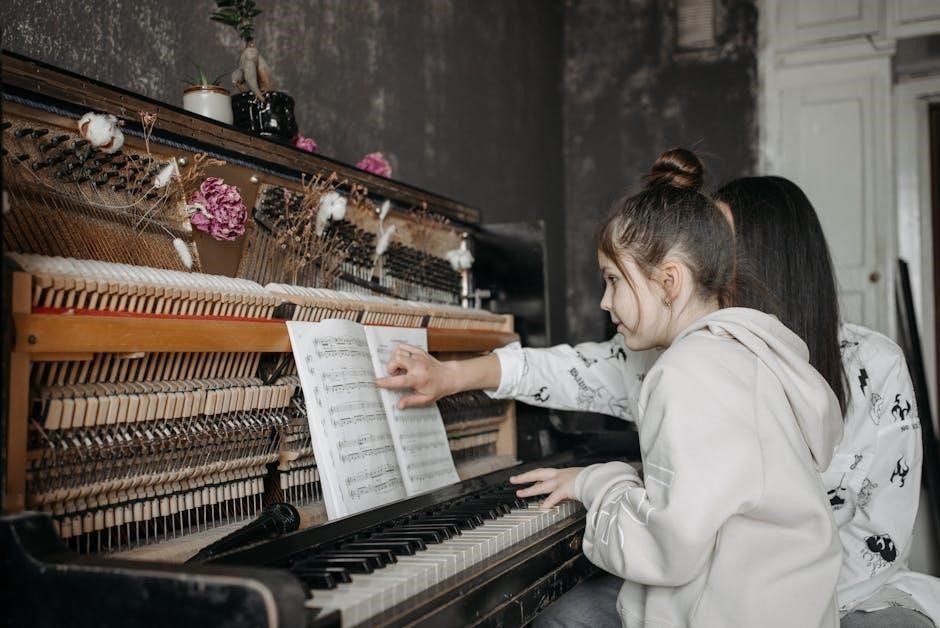
Tips for Playing “See You Again” on the Piano
Emphasize emotional expression and dynamics to capture the song’s heartfelt essence. Focus on smooth chord transitions and steady tempo to maintain rhythm. Practice arpeggios and scales to improve dexterity. Break the piece into sections for easier learning. Play with passion to convey the song’s meaningful lyrics and melody.
Understanding the Song’s Dynamics
Mastering the dynamics of “See You Again” is key to its emotional impact. The song begins softly, building to a powerful chorus. Pay attention to crescendos and decrescendos, which add depth and feeling. Use fermata to emphasize emotional peaks, and delicate touches for quieter moments. Dynamics guide the song’s mood, helping to convey its heartfelt message. Follow the sheet music’s markings to ensure expressive and nuanced playing.
Mastering the Chord Progressions
The chord progressions in “See You Again” are central to its emotional resonance. Focus on mastering the sequence of C Major, G Major, Am7, and F Major, which form the song’s foundation. Practice transitioning smoothly between these chords, especially the shift from F Major back to C Major in the chorus. Start with slow practice to ensure clean, precise chord shapes and gradually increase tempo. Pay attention to seventh chords like Am7, which add depth and emotion to the melody.
Arrangement and Structure of the Sheet Music
The sheet music follows a standard structure with verses, choruses, and a bridge, ensuring clarity and flow for pianists. The arrangement is well-organized for easy navigation.
Verse and Chorus Breakdown
The sheet music breaks down the song into clear verses and choruses, maintaining the original structure. The verses feature a simple yet emotional melody, while the choruses expand with richer harmonies. The chord progressions in the verses are repetitive, making them easy to follow, while the choruses introduce slight variations for depth. The melody is carried primarily by the right hand, with the left hand providing harmonic support. This structure allows pianists to focus on dynamics and expression, capturing the song’s emotional essence. The transition between sections is smooth, with clear markings for repeats and endings.
Bridge and Climax Analysis
The bridge in “See You Again” offers a moment of reflection, with a subtle key change that enhances emotional depth. The sheet music highlights arpeggios and chord inversions, creating a sense of movement. The climax builds on the chorus, intensifying dynamics and texture. Sustained notes and powerful chords emphasize the song’s peak, leading to a resolution that ties the piece together. This section demands precise timing and emotional delivery to convey the song’s heartfelt message.
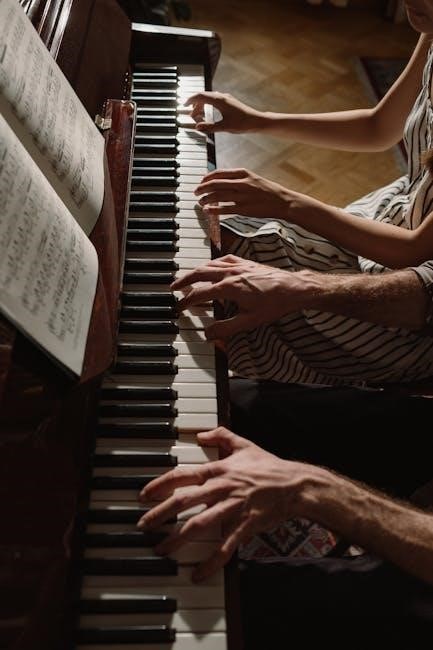
Necessary Skills to Play “See You Again”
Playing “See You Again” requires hand coordination, understanding of chord progressions, maintaining steady tempo, dynamics control, and emotional expression to convey the song’s depth effectively.
Required Piano Skills
Playing “See You Again” demands strong hand-eye coordination, finger dexterity, and control over dynamics. Proficiency in arpeggios and chord transitions is essential, as the song features intricate harmonies. The ability to maintain steady tempo while expressing emotional depth is critical. Familiarity with pedaling techniques enhances the piece’s atmospheric feel. Intermediate-level pianists should have a solid grasp of chord voicings and melodic phrasing to capture the song’s essence effectively.
Emotional Expression Techniques
To convey the emotional depth of “See You Again,” pianists must employ expressive techniques like dynamic contrast and tempo rubato. Subtle pedaling, such as sustain or sostenuto, enhances the song’s haunting quality. Phrasing should be legato for smoothness, with occasional staccato for emphasis. Vibrato-like touches and nuanced timing can mimic the vocal originality. Connecting with the song’s emotional core ensures authenticity, making the performance resonate deeply with listeners.
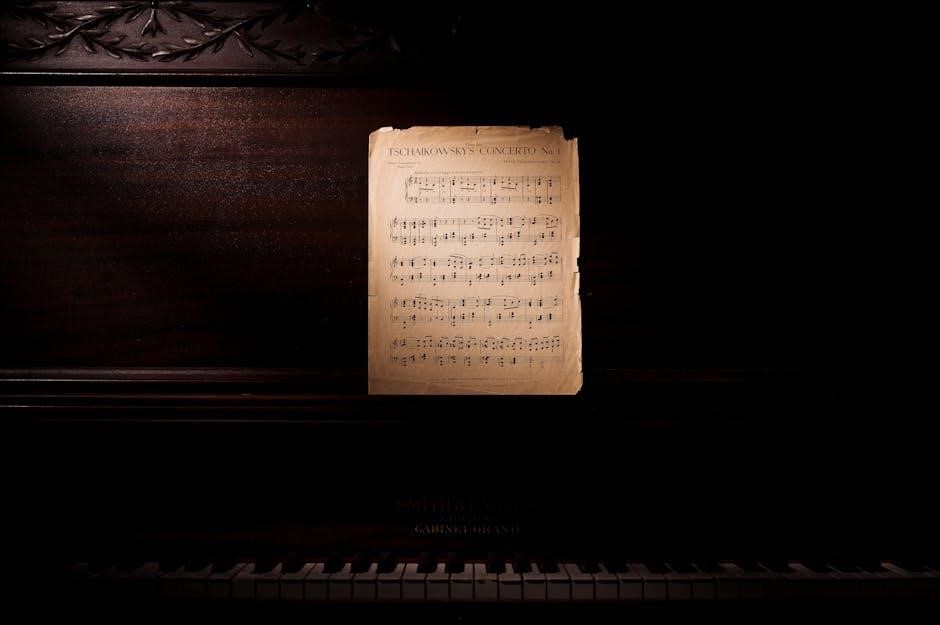
Popular Covers and Interpretations
Famous pianists like Chad Lawson and The Piano Guys have created captivating covers, blending emotional depth with unique arrangements. Many artists reinterpret the melody, adding personal flair while maintaining its heartfelt essence.
Famous Piano Covers
Famous pianists have created stunning covers of “See You Again,” showcasing its emotional depth. Artists like The Theorist and HDpiano offer intricate arrangements, blending arpeggios and melodic lines. Their interpretations highlight the song’s heartfelt essence, making it a favorite among pianists. These covers inspire learners to explore expressive techniques and dynamics, adding personal touches to their performances. Exploring these renditions can deepen your understanding of the piece and spark creativity in your own playing.
Unique Arrangements
Many pianists have created unique arrangements of “See You Again,” blending genres like jazz, classical, and pop. Some versions feature intricate harmonies, while others simplify the melody for beginners. These arrangements often include improvisational elements or creative tempo changes, offering fresh perspectives on the original composition. Exploring these interpretations can inspire pianists to add their own personal flair, making the piece truly unforgettable and tailored to their style.
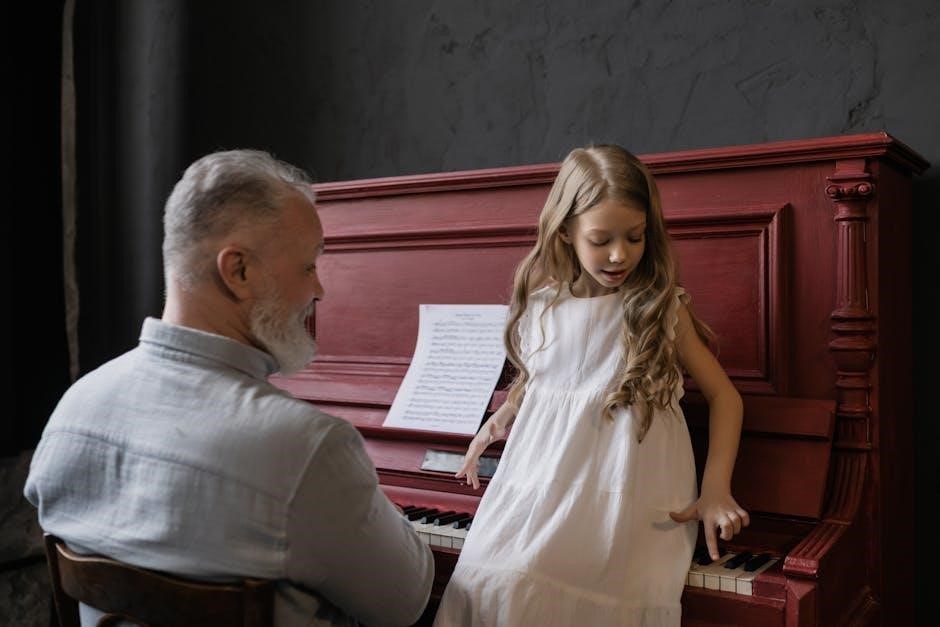
Using Software to Learn the Sheet Music
Utilize piano learning apps like Synthesia or Piano Maestro to practice “See You Again.” These tools offer guided lessons, interactive exercises, and tempo adjustments for effective learning.
Piano Learning Apps
Piano learning apps like Synthesia, Piano Maestro, and Yousician simplify learning “See You Again.” Synthesia highlights keys as notes play, aiding visual learners. Piano Maestro offers interactive lessons, while Yousician provides exercises and progress tracking. These tools help users master the melody and chord progressions at their own pace, with features like tempo adjustment and MIDI interfaces for real-time feedback. They’re ideal for beginners and intermediate players aiming to perfect the piece.
Software for Practicing
Software like MuseScore and FL Studio aids in refining your practice of “See You Again.” MuseScore allows tempo adjustment and looping sections, helping you focus on challenging parts. FL Studio offers MIDI editing for precise note accuracy. Tools like Transcribe! enable slowing down recordings without pitch distortion, ideal for studying Wiz Khalifa’s original melody. These programs enhance practice efficiency and precision, ensuring a polished performance of the piano arrangement.
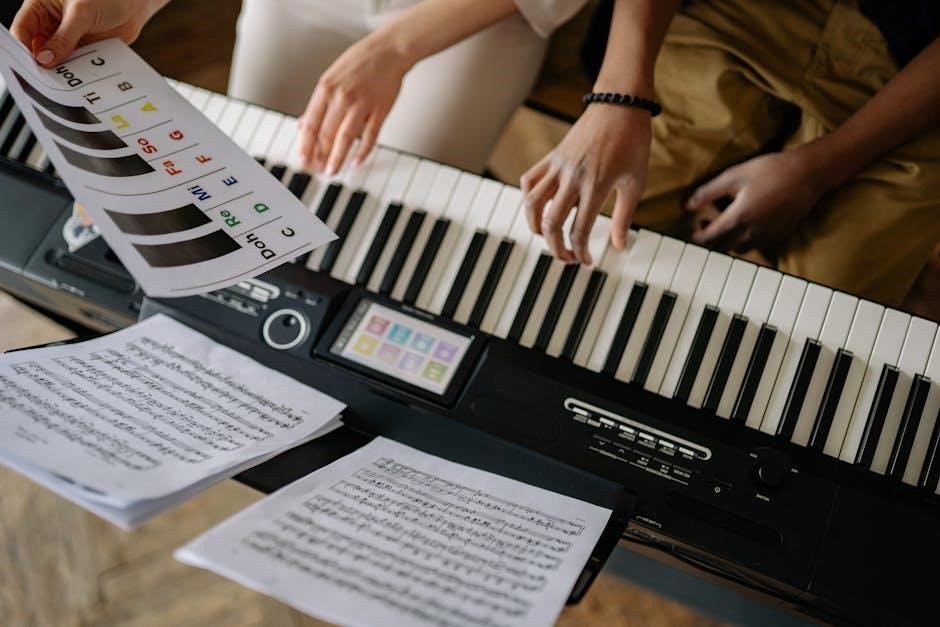
Instruments and Tools Needed
To play “See You Again,” you’ll need a piano, a music stand, and a comfortable bench. Optional tools include a metronome for timing and pedals for expression.
Piano Requirements
A standard acoustic or digital piano is ideal for playing “See You Again.” Ensure your piano has 88 keys for the full range. Digital pianos with weighted keys are recommended for realistic dynamics. A MIDI-compatible keyboard can also work if connected to a computer. Proper tuning is essential for accurate sound reproduction. Familiarize yourself with the instrument’s pedals, as they enhance expression in the melody. Choose a piano that suits your skill level and practice environment.
Additional Accessories
To enhance your playing experience, consider using a metronome for precise tempo control. A sustain pedal can add depth to emotional passages. A music stand keeps sheet music at eye level, reducing strain. For comfort, use a piano bench or adjustable stool. Felt hammers or a piano tuner may be needed for acoustic pianos. Headphones are useful for quiet practice, and highlighters can mark key sections in the sheet music for easy reference.
Tempo and Timing in the Sheet Music
The sheet music for “See You Again” is marked at a moderate tempo, typically around 80 BPM. The timing emphasizes a steady, emotional flow, with dynamics and rests carefully notated to preserve the song’s heartfelt essence. Pay attention to tempo changes and rhythmic patterns to maintain the piece’s expressive feel and connection.
Metronome Settings
Set your metronome to 80 BPM for “See You Again” to maintain the song’s steady, emotional pace. This tempo aligns with the original track’s rhythm. Using a metronome helps pianists keep consistent timing, especially during the verses and choruses. While the melody flows smoothly at this speed, it allows for subtle expressive variations to enhance the song’s heartfelt feel without losing synchronization.
Rhythmic Patterns
The sheet music for “See You Again” features rhythmic patterns that blend simplicity with emotional depth. The verses follow a steady, arpeggiated rhythm, while the choruses introduce syncopation to enhance the melody’s dynamics. Pay attention to the mix of quarter notes and eighth notes, as they create a flowing yet heartfelt feel. These patterns are crucial for maintaining the song’s mood and connecting with its emotional core, ensuring a captivating performance.
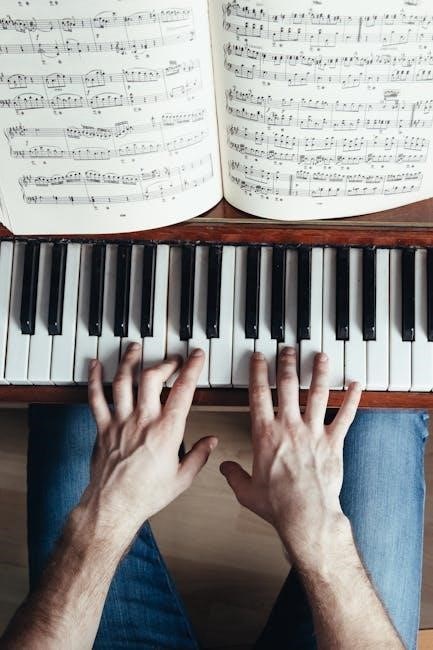
Practice Routine for “See You Again”
Begin with warm-ups, then break the song into sections. Start with the verse, focusing on chord progressions and melody synchronization. Gradually increase tempo using a metronome to build mastery and confidence in playing smoothly and emotionally.
Warm-Up Exercises
Begin with finger stretches and chromatic scales to improve dexterity. Play arpeggios in C Major and A Minor to strengthen finger independence. Practice slow, legato melodies to connect with the song’s emotional depth. Incorporate dynamics and timing exercises to prepare for the piece’s expressive moments. Start with a metronome at a slow tempo, focusing on accuracy before increasing speed. This routine ensures readiness to tackle the sheet music effectively.
Section-by-Section Practice
Break down “See You Again” into manageable sections: verses, pre-choruses, choruses, and the bridge. Focus on mastering each part individually. Isolate challenging measures and practice them slowly with a metronome. Gradually increase tempo as confidence grows. Pay attention to transitions between sections to ensure smoothness. Highlight emotional peaks and dynamics to capture the song’s essence. Loop difficult passages until they feel natural, then combine sections seamlessly for a cohesive performance.
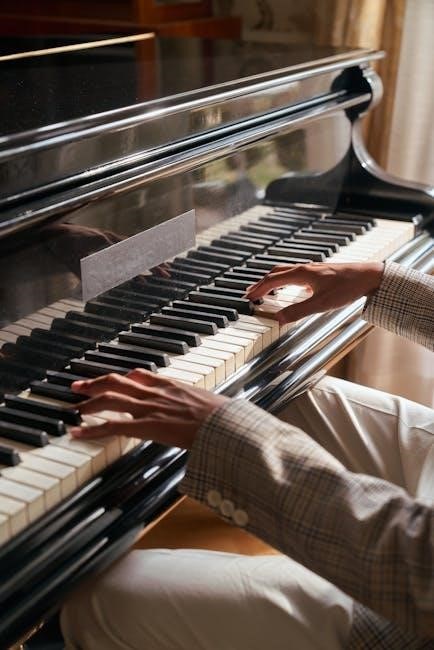
Performing “See You Again” Live
Break “See You Again” into verses, pre-choruses, choruses, and the bridge. Practice each section slowly, focusing on challenging measures. Use a metronome to build accuracy and tempo. Emphasize emotional expression in key moments. Work on smooth transitions between sections. Loop difficult passages until mastered, then combine sections for a polished performance. This method ensures clarity and confidence when playing the entire piece.
Stage Presence Tips
Engage your audience by maintaining eye contact and smiling. Confidently own the stage with good posture and subtle gestures. Express the song’s emotions through facial expressions and body language. Move naturally to the rhythm, avoiding stiffness. Connect with listeners by sharing your passion and sincerity. A strong stage presence enhances your performance, making it memorable and impactful for everyone watching.
Handling Nervousness
Take deep breaths before starting to calm your nerves. Practice positive visualization to imagine a successful performance. Accept nervousness as natural and channel it into energy. Focus on the music rather than perfection, connecting emotionally with the piece. Prepare thoroughly to boost confidence, and remind yourself of your hard work. Use a pre-performance routine to center yourself, ensuring a composed and engaging delivery of “See You Again.”
Troubleshooting Common Issues
Common issues include incorrect notes, rhythm struggles, and poor timing. Double-check sheet music, practice with a metronome, and slow tempo to refine accuracy and control.
Fixing Mistakes
Identify errors by slowing tempo and practicing hands separately. Use a metronome to improve timing and record sessions for self-assessment. Break the piece into smaller sections and focus on trouble spots. Ensure proper posture and hand positioning for comfort and accuracy. Maintain consistent practice, even in short sessions, to build muscle memory. Consider using piano learning apps for additional support and visualization techniques to reinforce correct playing.
Improving Weak Spots
Isolate challenging sections and practice them repeatedly at a slower tempo. Focus on proper finger placement and technique to build accuracy. Incorporate warm-up exercises targeting specific skills, like arpeggios or chord transitions. Use piano learning apps for visual feedback and adjust your practice routine to emphasize weak areas. Gradually increase tempo as confidence grows. Record sessions to track progress and refine trouble spots systematically.
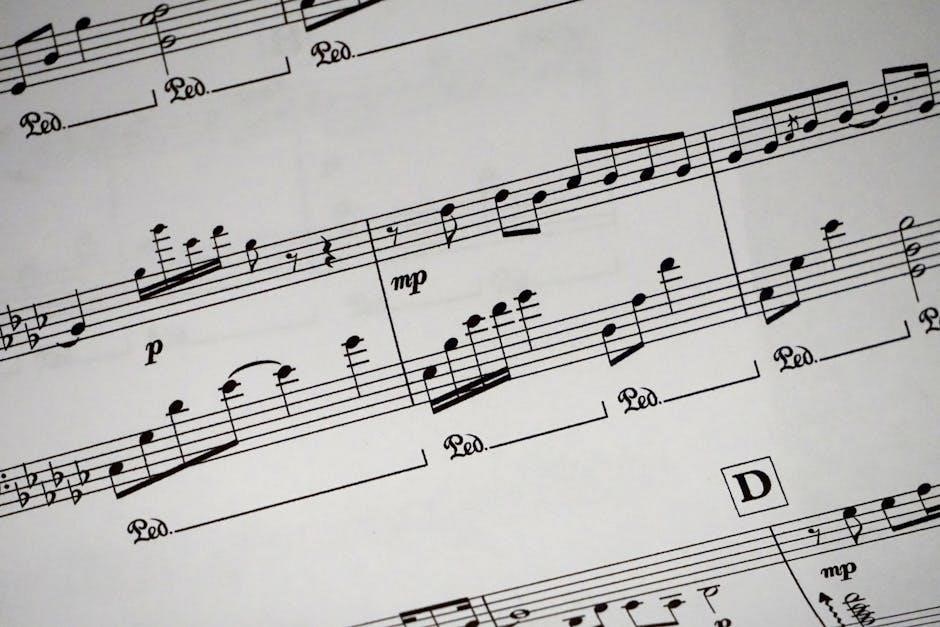
Cultural and Musical Impact
“See You Again” became a global anthem, resonating emotionally with millions as a tribute to Paul Walker. Its universal message and melody transcended genres, inspiring countless piano covers and solidifying its place in modern pop culture.
History of the Song
“See You Again” was written by Wiz Khalifa and Charlie Puth for the Furious 7 soundtrack, serving as a tribute to Paul Walker. Released in 2015, it debuted at number one on the Billboard Hot 100 and became a global hit, earning a Grammy nomination. The song’s emotional depth and catchy melody made it a cultural phenomenon, with over a billion views on YouTube. Its success led to widespread demand for piano sheet music, allowing pianists to reinterpret the track and connect with its heartfelt message.
Influence on Piano Players
“See You Again” has inspired countless pianists worldwide, offering a heartfelt melody that resonates emotionally. Its accessible chord progressions and memorable structure make it a favorite for players of all skill levels. The song’s popularity has encouraged pianists to explore contemporary pop music, blending emotional depth with technical simplicity. Many artists have created piano covers, further cementing its place as a modern classic and a staple in piano repertoire.
“See You Again” piano sheet music in PDF is a timeless piece, offering emotional depth and accessibility. Its popularity endures, inspiring pianists to master and perform it beautifully.
Final Thoughts
Learning to play “See You Again” on the piano is a rewarding journey, blending emotional depth with technical skill. With high-quality sheet music, dedication, and practice, pianists of all levels can master this beloved piece. The availability of both free and paid resources ensures accessibility, while the song’s timeless appeal guarantees a meaningful connection with audiences. Embrace the process, and let the music resonate with your passion and creativity.
Encouragement for Learners
Learning “See You Again” on piano is a journey worth embracing. Even if challenges arise, remember that progress comes with time and practice. Celebrate small victories, and don’t hesitate to seek guidance or resources. The emotional depth of the song makes it a fulfilling piece to master. Stay committed, enjoy the process, and let the music inspire you to grow as a pianist. Keep playing with passion and perseverance!
